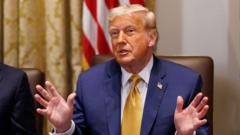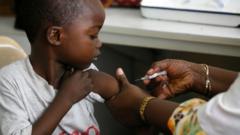Australia seeks to protect children from cyberbullying and mental health issues linked to social media but faces challenges around implementation and unintended consequences.
Australia's Bold Move to Ban Social Media for Kids Under 16: Will It Succeed?

Australia's Bold Move to Ban Social Media for Kids Under 16: Will It Succeed?
The Australian government proposes a groundbreaking ban on social media use for children under 16, but experts debate its effectiveness and implications.
In a controversial move, the Australian government has announced a proposed ban on social media usage for children under 16, a step Prime Minister Anthony Albanese describes as “world-leading.” The initiative follows reported cases of cyberbullying, including the unsettling experience of a 12-year-old boy, referred to as James, who faced threats through Snapchat after a disagreement with peers. This incident, among others, has prompted parents like James's mother, Emma (pseudonym), to support the legislation, believing it is necessary for the safety of their children.
The proposed laws—which target popular platforms like X (formerly Twitter), TikTok, Facebook, and Instagram—are designed to shield children from the perceived harms of social media. The government aims to provide parents with peace of mind, according to Albanese. The legislation, which was introduced in parliament recently, lacks specific implementation details, leaving it to the eSafety Commissioner to determine how enforcement will occur once the law is enacted in at least a year.
The new regulations could impose hefty penalties on tech companies that fail to comply, with potential fines reaching up to A$50 million (approximately $32.5 million). However, some essential online services, such as gaming sites and messaging applications, may remain unaffected. Critics, including representatives from the Digital Industry Group Inc, have described the ban as old-fashioned, cautioning that it could inadvertently steer children towards more dangerous, unregulated areas of the internet.
Julie Inman Grant, the eSafety Commissioner, acknowledges the difficulties her office will face enforcing the ban given the rapid pace of technological change. She raised concerns regarding the link between social media usage and mental health, challenging the government’s assumption that restricting access is a feasible solution. Her perspective is further supported by some teens like Lucas Lane, who argue that social media fosters vital connections and self-expression.
Over 100 Australian academics oppose the ban, viewing it as too extreme and inconsistent with United Nations recommendations for ensuring safe digital access. Their stance echoes findings from a bipartisan parliamentary committee, which recommended stricter regulations on tech companies rather than an outright prohibition on youth access.
Experts assert the need for a comprehensive approach that combines legislation with education, advocating for digital literacy to equip children to navigate social media responsibly. The government has already invested in developing educational resources, but many children still lack regular lessons on safe online practices.
The proposal has drawn comparisons to previous attempts at controlling youth access to online platforms in other countries, which have often faced backlash or evasion by users. From South Korea’s now-defunct “shutdown law” to similar legislation in France and the U.S. state of Utah, past initiatives reveal the complexities surrounding age-verification technologies and the challenge of crafting effective regulations that also respect individual rights.
Albanese acknowledges that while the proposal may not entirely eliminate loopholes, it showcases a commitment to address children's online safety. For advocates like parents Emma and Amy Friedlander, the proposed ban is less about absolute enforcement and more about shifting societal norms related to youth engagement with technology.
As the debate unfolds, youngsters like James hope that protecting them from the pressures of constant online interaction will encourage healthier activities and more genuine connections in the real world.
The proposed laws—which target popular platforms like X (formerly Twitter), TikTok, Facebook, and Instagram—are designed to shield children from the perceived harms of social media. The government aims to provide parents with peace of mind, according to Albanese. The legislation, which was introduced in parliament recently, lacks specific implementation details, leaving it to the eSafety Commissioner to determine how enforcement will occur once the law is enacted in at least a year.
The new regulations could impose hefty penalties on tech companies that fail to comply, with potential fines reaching up to A$50 million (approximately $32.5 million). However, some essential online services, such as gaming sites and messaging applications, may remain unaffected. Critics, including representatives from the Digital Industry Group Inc, have described the ban as old-fashioned, cautioning that it could inadvertently steer children towards more dangerous, unregulated areas of the internet.
Julie Inman Grant, the eSafety Commissioner, acknowledges the difficulties her office will face enforcing the ban given the rapid pace of technological change. She raised concerns regarding the link between social media usage and mental health, challenging the government’s assumption that restricting access is a feasible solution. Her perspective is further supported by some teens like Lucas Lane, who argue that social media fosters vital connections and self-expression.
Over 100 Australian academics oppose the ban, viewing it as too extreme and inconsistent with United Nations recommendations for ensuring safe digital access. Their stance echoes findings from a bipartisan parliamentary committee, which recommended stricter regulations on tech companies rather than an outright prohibition on youth access.
Experts assert the need for a comprehensive approach that combines legislation with education, advocating for digital literacy to equip children to navigate social media responsibly. The government has already invested in developing educational resources, but many children still lack regular lessons on safe online practices.
The proposal has drawn comparisons to previous attempts at controlling youth access to online platforms in other countries, which have often faced backlash or evasion by users. From South Korea’s now-defunct “shutdown law” to similar legislation in France and the U.S. state of Utah, past initiatives reveal the complexities surrounding age-verification technologies and the challenge of crafting effective regulations that also respect individual rights.
Albanese acknowledges that while the proposal may not entirely eliminate loopholes, it showcases a commitment to address children's online safety. For advocates like parents Emma and Amy Friedlander, the proposed ban is less about absolute enforcement and more about shifting societal norms related to youth engagement with technology.
As the debate unfolds, youngsters like James hope that protecting them from the pressures of constant online interaction will encourage healthier activities and more genuine connections in the real world.




















